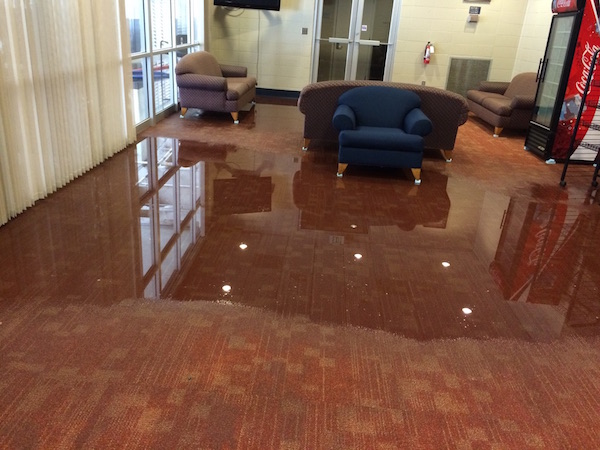
Perhaps the biggest nightmare any homeowner can experience is a flood, be it the result of natural disaster or plumbing failure. If you have been the unfortunate victim of flood damage, there are a number of procedures and processes you should follow on your way to undertaking flood damage repair. If you are in the middle of an emergency flood cleanup, here’s a short list of guidelines to follow to get your home back up and running as soon as possible.
Safety is Your Top Priority
Any time your home experiences significant flood damage, the first step you should take is to evaluate your home for safety issues before you re-enter. Call in a professional assessor to evaluate the extent of the damage your home has incurred. This means checking the home for structural damage, making sure there are no electrical issues (remember water and electricity don’t mix!), and getting an initial idea of the severity of other damage and potential health concerns you may have to deal with during the process of performing flood damage repair on your home. Once you’ve got the green light that all major safety concerns have been addressed, it’s time to move in and start your emergency flood cleanup.
Document Everything
Upon re-entering your home, the first thing you should do is document all flood damage for insurance reasons. Take pictures of the flooded areas of your home, of any damaged furniture and belongings, and make certain to hang on to any paperwork from the assessor and repair bills you incur along the way. Being fairly compensated for a flood can be tricky business. The more documentation you have of the damage, the better things will turn out for you.
Ready to start your flood damage?
Find ProsEmergency Flood Cleanup
Once you’ve carefully documented all the damage, the dirty work begins. You need to get your home dry and cleaned up as quickly as possible to avoid further damage, as well as to prevent the development of mold and fungus, which can lead to health problems and larger remediation projects. Pump out any remaining standing water, set up de-humidifiers, and get as many fans running as soon as possible. Hiring a flood damage repair specialist for your emergency flood cleanup is an excellent investment if they are available. They have equipment and knowledge that you don’t have access to, all of which will get your home dried out in the shortest amount of time possible.
Begin Your Flood Damage Repair
Once your home has been dried out and cleaned up, it’s time to start the flood damage repair process. Depending on the extent and cause of your flood, this can be a substantial undertaking. If your home has suffered structural damage, you may be talking about major construction. You might even need to seek out an alternate residence until your home can be restored to its original state. Even if the damage was fairly light, however, you’re still talking about the replacement of flooring, drywall, and any furniture and other possessions that were destroyed in the flood.
If you’ve experienced a serious flood in your home, your best bet is to talk to a contractor experienced in dealing with flood damage, restoration, and repairs. Doing so is the only sure-fire way to get your home back to where it started. Furthermore, hiring one of these companies early on will save you the trouble of finding multiple contractors along the way to restore your home since they are an all-in-one service. A good flood restoration company has the resources and know-how to guide your flood damage repair project through from beginning to end. The average flood damage cost for hiring professionals runs most homeowners between $1,000 – $4,000. Consult our True Cost Guide for more estimated cost details.
 Snow Removal Requests Significantly Increase After Juno Blizzard of 2015
Snow Removal Requests Significantly Increase After Juno Blizzard of 2015  The 20 Deadliest Tornadoes on Record in the US & World
The 20 Deadliest Tornadoes on Record in the US & World  Water, Water Everywhere: How to Prevent Flood Damage
Water, Water Everywhere: How to Prevent Flood Damage  Storm Shelters Give Respite from The Storm
Storm Shelters Give Respite from The Storm  Checklist: Hurricane Tips
Checklist: Hurricane Tips 

Are You Familiar With This Topic? Share Your Experience.